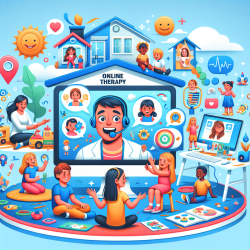Stroke is a leading cause of death and disability in the United States, yet awareness of its symptoms and risk factors remains alarmingly low, particularly among younger populations. A recent study titled Stroke knowledge among middle and high school students underscores this critical gap. As practitioners dedicated to improving children's health outcomes, it is imperative to leverage the findings of this study to enhance our strategies and interventions.
The study surveyed 603 students from grades 7 to 12 at City High Middle School in Grand Rapids, Michigan. The results were revealing:
- Only 8% of respondents correctly identified stroke as the fifth leading cause of death in the United States.
- 50.1% recognized that a stroke occurs in the brain.
- 11.1% correctly identified all 11 stroke risk factors.
- 5.1% correctly selected all four correct stroke symptoms.
- 64.5% recognized stroke as an immediate medical emergency.
- 55.9% knew the acronym FAST (face, arms, speech, time).
These statistics highlight a significant knowledge gap that could be addressed through targeted educational interventions. Here are some actionable steps practitioners can take based on the study's findings:
1. Integrate Stroke Education into School Curricula
Given the low awareness of stroke symptoms and risk factors among students, integrating stroke education into the school curriculum could be a game-changer. Educational programs such as Texas' initiative, which educated 325,000 children about stroke, have proven effective in increasing stroke treatment rates in local areas.
2. Use Multimedia Resources
Educational campaigns using posters, television, radio advertisements, and flyers can significantly improve stroke knowledge. The "Hip-Hop Stroke" program in New York, which used engaging multimedia content to educate 5th and 6th graders, successfully increased stroke awareness among students and their parents.
3. Conduct Workshops and Seminars
Interactive workshops and seminars can provide students with hands-on learning experiences about stroke symptoms and emergency responses. These sessions can be facilitated by healthcare professionals and can include practical demonstrations and Q&A segments.
4. Collaborate with Parents and Communities
Parental education plays a crucial role in a child's health literacy. Engaging parents through community events and informational sessions can amplify the impact of school-based interventions. Studies have shown that parental involvement in educational programs can significantly enhance the overall effectiveness of stroke awareness campaigns.
5. Implement Peer-Led Initiatives
Peer-led initiatives can be particularly effective in disseminating health information among adolescents. Encouraging students to take on leadership roles in stroke awareness campaigns can foster a sense of responsibility and community engagement.
By implementing these strategies, practitioners can play a pivotal role in bridging the knowledge gap identified in the study. Enhancing stroke awareness among middle and high school students is not just about educating them; it's about empowering them to act swiftly and effectively in the event of a stroke, potentially saving lives.
To read the original research paper, please follow this link: Stroke knowledge among middle and high school students.










